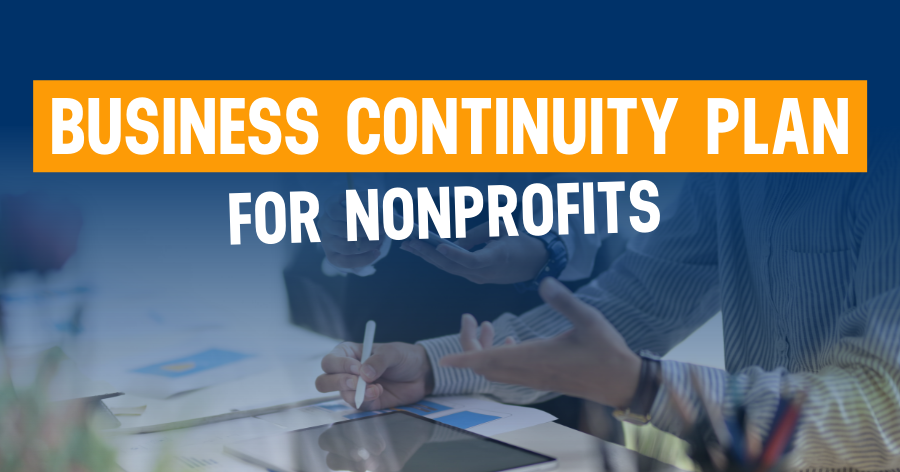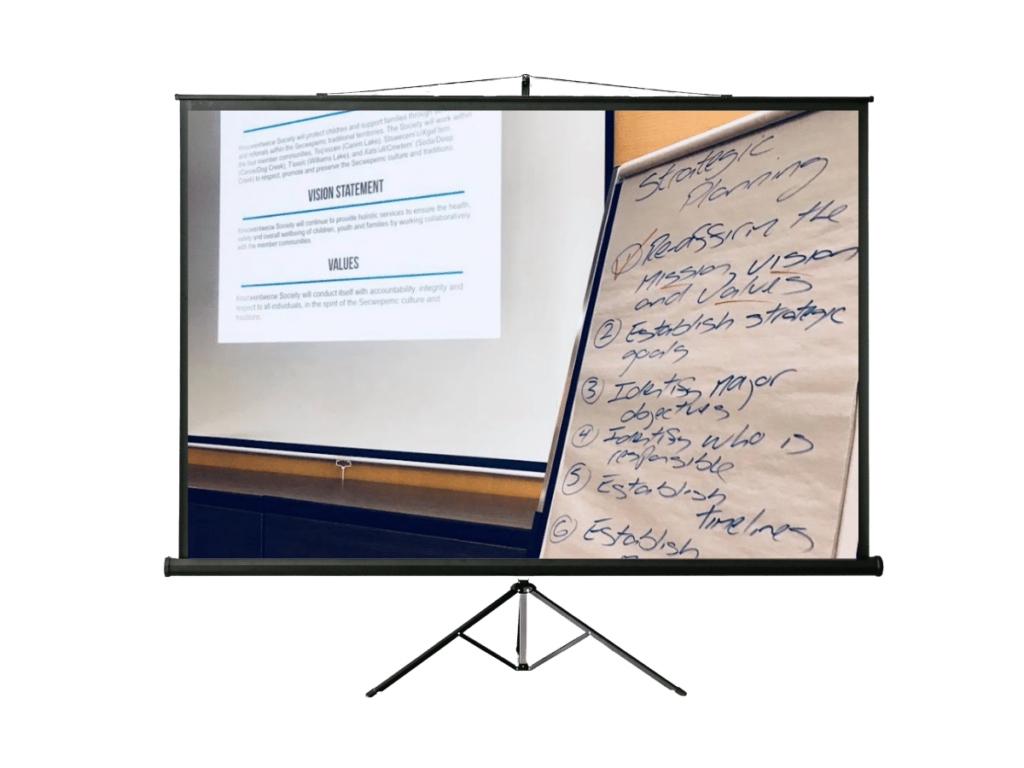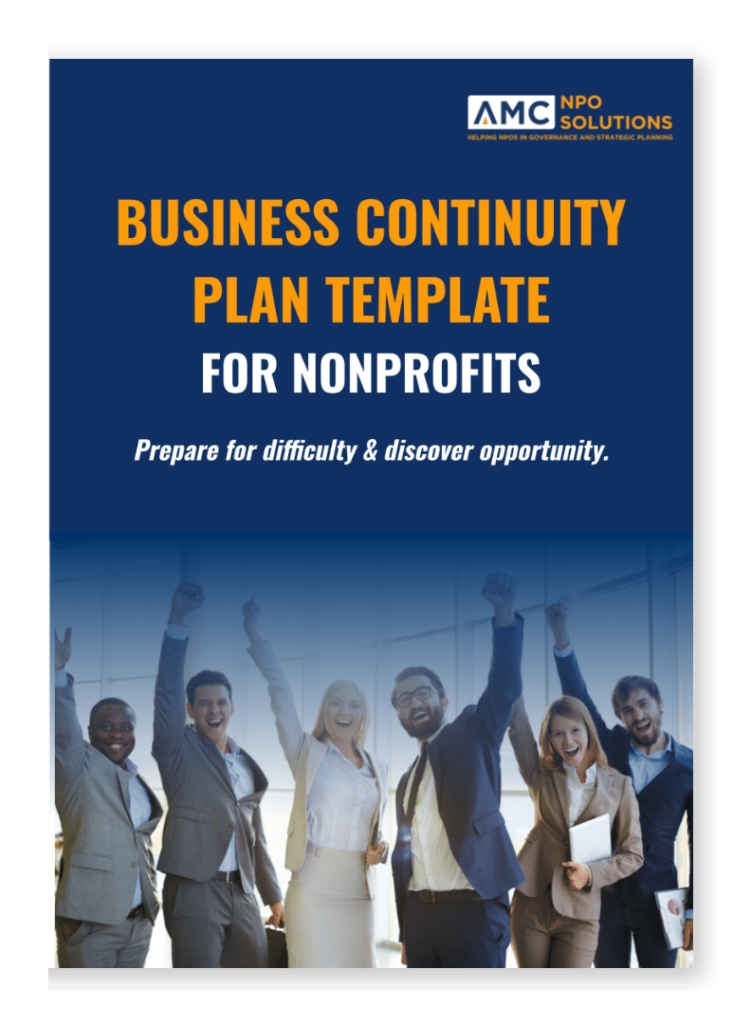
2020 was a perfect example of the phrase “Anything can happen at any time.” From a global pandemic to destructive wildfires and even cyberattacks. Businesses now need to protect their operations more than ever. The best way to do this is to learn how to write a business continuity plan for nonprofits; luckily, we’ve created a guide for you below that includes a free and easy downloadable template. We hope it helps you ensure you can achieve your mission, even in suboptimal times.
Also read:
- How To Take Board Meeting Minutes: The Nonprofit Guide
- Beyond Carver: The Complementary Model of Board Governance
- Board Performance Evaluation
What is a Business Continuity Plan? (BCP)
A business continuity plan for nonprofits refers to the organization’s system for restoring critical business functions in the event of “disaster.” Many of these disasters can be natural threats like the death of an employee or adverse weather. But also include service outages, cyberattacks and other potential hazards.
What is the importance of business continuity planning for nonprofits?
The unexpected is well, always expected. Nothing is ever certain for nonprofits. The list is endless, from pandemics, wildfires, riots, and internal possibilities. As a result, those who fail to plan for such events leave their operation open to disruptions and liabilities.
For every nonprofit, achieving its mission is everything. It’s the pinnacle of everything they do. So it only makes sense to protect it by developing a business continuity plan. That way, you can respond appropriately and still serve your community when disaster strikes.
Summarising the cost of not having a business continuity plan
Overall, if you don’t choose to write a business continuity plan for your nonprofit when unexpected situations occur, you may find you have:
- Reduced organisational productivity
- Financial loss
- Reputational damage
- Business failure
- Injury
- Mission failure
- Confused and demoralised employees
Business Continuity vs. Disaster Recovery: What’s the difference?
Before we proceed, business continuity plans should not be confused with disaster recovery plans. Like a business continuity plan, disaster recovery planning involves determining strategies and post-failure procedures. Yet, it is only one facet of business continuity planning. Hence why disaster recovery plans mainly focus on safeguarding your organization’s data.
On the other hand, while business continuity planning does take this into account, it also focuses on the risk management, oversight and planning an organization needs to stay operational during a disruption.
How to write a Business Continuity Plan for Nonprofits
Discover the 6 key steps to writing an effective nonprofit business continuity plan below:
1. Know your mission
Your mission is what you do. It’s the basis of strategy and a blueprint of your values. When beginning to write your non-profit business continuity plan, you need to be clear on who you are as an organisation and what you do to serve your community. Everything you do centres around achieving that mission, so ensure everyone involved in the business continuity planning knows and understands it.
When writing the business continuity plan, you can preface with a short but concise paragraph that includes your mission statement, values statement and vision statement, so everyone is clear on precisely what you do and how you do it.
2. Know your organization
Next, you thoroughly understand and note how your official organizational structure. Overall, you need to list every person involved in the organization, both internal and external, including names, roles, responsibilities and contact information. This is an essential step, not only because it clarifies operations but because everyone is vital when responding to an emergency.
3. Know the keys to business continuity planning
The fact is no two business continuity plans will look the same. However, they all include the same key elements that make them successful. Check them out below:
- Identifying potential risks
- Determining critical business functions
- An activation plan and universal response (i.e. what will trigger a nonprofit business continuity plan response, who will activate it, and what must be done at the start)
- Clearly defined key roles and responsibilities for all staff involved
- Detailed plans for communicating with staff, clients, vendors, and the community you serve
- Alternate nonprofit operation strategies
- Essential equipment backup (i.e. data, necessary business documents, and critical assets)
- A business recovery plan for recovering and retaining regular business operations
- Regular testing and evaluation of your nonprofit business continuity plan
4. Assess risks
Also known as conducting a Business Impact Analysis. This process helps you consider what risks are most likely to impact your organisation. For example, what’s your geographical location like? If you experience lots of adverse weather like tornadoes, droughts or floods, this could likely affect your nonprofit business operations. However, don’t just think about headline disasters. It’s also a chance to formally organise risks you’ve probably already identified. Such as losing a key vendor, power supplies or losing data.
Overall, to document and assess the risks, identify the threats you face regarding your people, processes and technology. Then designate a lead person to oversee the creation and implementation of the business continuity plan. Finally, assemble teams and assign different duties, such as a communications team responsible for contacting and updating staff, volunteers and other stakeholders.
5. Know internal and external processes
After noting what is most likely to affect the organization directly, it’s vital to note what internal and external processes are critical. Always ensure you put these processes in priority order to help inform future decision making when necessary. It’s always recommended to detail your external report with information about your power, telecommunications and any essential logistics to core work.
Also read: 10 Complementary Model Operating Features
6. Create your business continuity plan
Finally, it’s time to bring everything together. When creating your business continuity plan, it’s important to remember that it’s a living document. For that reason, you should plan to review it at least every six months to ensure the processes, risks and actions are up to date and helpful in an emergency.
Or download our business continuity plan template for nonprofits
Prepare for difficulty & discover opportunities. Download and discover a proven framework below for writing an effective nonprofit business continuity plan:
Create a brighter future for your organization with AMC
AMC’s skilled strategic planning facilitators can help you navigate complex issues and build the transformative plan you need for success.
Whether you have a specific goal, troublesome problem or a new exciting opportunity you need assistance navigating -AMC’s customized strategic planning sessions will help.
Contact us today to learn how AMC’s Strategic Planning facilitators can help your organization develop, improve, and grow.


